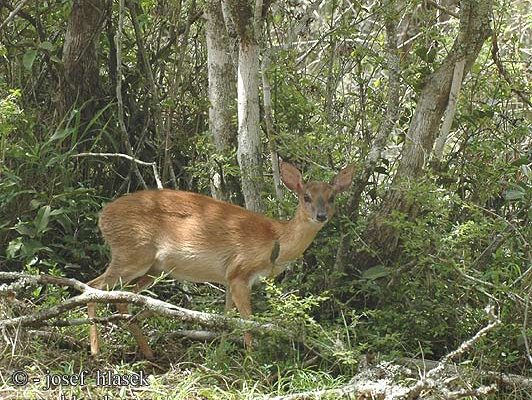
Neotragus moschatus moschatus
Neotragus moschatus moschatus NatureServe Explorer Species Reports — NatureServe Explorer is a source for authoritative conservation information on more than 50,000 plants, animals and ecological communtities of the U.S and Canada. NatureServe Explorer provides in-depth information on rare and endangered species, but includes common plants and animals too. NatureServe Explorer is a product of NatureServe in collaboration with the Natural Heritage Network.
ITIS Reports — ITIS (the Integrated Taxonomic Information System) is a source for authoritative taxonomic information on plants, animals, fungi, and microbes of North America and the world.
FWS Digital Media Library — The U.S. Fish and Wildlife Service’s National Digital Library is a searchable collection of selected images, historical artifacts, audio clips, publications, and video. Neotragus moschatus is named for its pungent smell originating from preorbital glands that produce a musky secretion (Huffman 2001). It has a slender build and relatively high hindquarters. Dorsally it has a speckled appearance and varies from gray to rich chestnut with a reddish tinge. The Suni is a small antelope. It occurs in dense underbrush from central Kenya to KwaZulu-Natal in South Africa. Suni are around 30 to 43 centimetres high at the shoulder and weigh 4.5 to 5.4 kilograms. They are usually reddish brown, darker on their back than their sides and legs. The belly, chin, throat and insides of legs are white. The nostrils are prominent red, and there are black rings around the eyes and above the hooves. Males have horns 8–13 cm long, that are ridged most of their length and curve backwards close to their heads. Females do not have horns. Suni can make weak barking and whistling sounds.
| Status | Date Listed | Lead Region | Where Listed |
|---|---|---|---|
| Endangered | 07/27/1979 | Foreign (Headquarters) | Wherever found |
- Countries in which the the Zanzibar suni, Wherever found is known to occur: Tanzania
| 06/25/1979 | 44 FR 37124 37127 | Final Endangered Status for 25 Foreign Species of Mammals and Birds |
| 04/19/1978 | 43 FR 16524 16527 | Proposed Endangered Status for 25 Foreign Species of Mammals and Birds |












